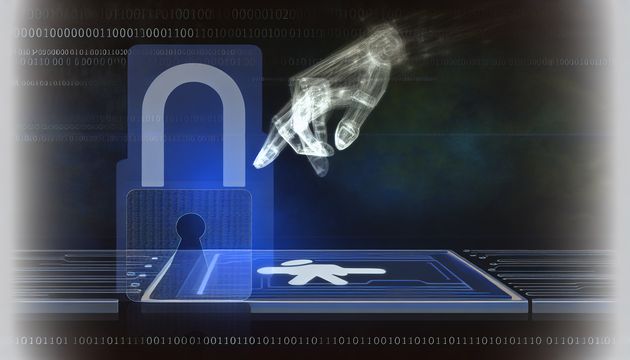
The Evolution and Impact of the Rapper Bot Malware
The “Rapper Bot” malware, also known as “Eleven Eleven” and “CowBot,” has emerged as a formidable force in the realm of cyber threats. This Mirai-based botnet, active since at least 2021, has evolved significantly, initially targeting Digital Video Recorders (DVRs) and routers by exploiting vulnerabilities to commandeer these devices. Over time, Rapper Bot expanded its capabilities, incorporating a cryptomining module in 2023, thus diversifying its revenue streams and maximizing profits through both DDoS attacks and cryptocurrency mining. This dual-purpose functionality underscores the adaptive nature of the malware and its developers’ intent to exploit multiple avenues for financial gain (BleepingComputer).
The Evolution and Impact of the Rapper Bot Malware
Historical Development and Technical Evolution
The Rapper Bot malware, also known as “Eleven Eleven” and “CowBot,” is a Mirai-based botnet that has been active since at least 2021. Its development represents a significant evolution in the landscape of distributed denial-of-service (DDoS) attacks. Initially, the malware primarily targeted Digital Video Recorders (DVRs) and router devices, exploiting vulnerabilities to gain control over these devices. A DDoS attack involves overwhelming a target system with a flood of internet traffic, rendering it unusable (BleepingComputer).
Over time, Rapper Bot expanded its capabilities, incorporating a cryptomining module in 2023 to diversify its revenue streams. Cryptomining uses a device’s processing power to solve complex mathematical problems, generating cryptocurrency as a reward. This addition allowed the malware to maximize profits by utilizing compromised devices not only for DDoS attacks but also for mining cryptocurrencies. This dual-purpose functionality highlights the adaptive nature of the malware and its developers’ intent to exploit multiple avenues for financial gain.
Scale and Scope of Attacks
Rapper Bot’s operational scale is noteworthy, with the botnet reportedly launching 370,000 attacks since April 2025. These attacks have targeted over 18,000 entities across 80 countries, including U.S. government systems, major media platforms, gaming companies, and large tech firms. The botnet’s firepower ranged between 2 to 6 terabits per second (Tbps), with some attacks exceeding 1 billion packets per second (pps). To put this in perspective, a terabit is a trillion bits, and such massive data flows can cripple even the most robust systems (BleepingComputer).
The sheer volume and intensity of these attacks underscore the significant threat posed by Rapper Bot. The malware’s ability to harness the power of more than 45,000 compromised devices across 39 countries further illustrates its extensive reach and the potential for widespread disruption.
Economic Impact and Financial Implications
The economic impact of Rapper Bot’s activities is substantial. According to the U.S. Department of Justice (DoJ), a DDoS attack averaging over two Tbps and lasting 30 seconds can cost victims anywhere from $500 to $10,000. Given the frequency and scale of the attacks, the cumulative financial toll on affected organizations is significant.
Moreover, the involvement of extortion tactics, where attackers leverage the DDoS attack volumes to demand ransoms from victims, exacerbates the financial burden. This dual threat of direct attack costs and extortion highlights the multifaceted economic challenges posed by Rapper Bot.
Law Enforcement and Mitigation Efforts
In response to the growing threat of Rapper Bot, law enforcement agencies, including the U.S. DoJ, have intensified efforts to dismantle the botnet and apprehend those responsible. The seizure of the botnet’s infrastructure as part of “Operation PowerOff” on August 6, 2025, marked a significant milestone in these efforts (BleepingComputer).
The alleged developer and administrator of Rapper Bot, Ethan Foltz, was charged with aiding and abetting computer intrusions, which carries a maximum sentence of up to ten years in prison if convicted. This legal action underscores the seriousness with which authorities are addressing the threat posed by Rapper Bot and similar cybercriminal activities.
Future Implications and Security Considerations
The evolution and impact of Rapper Bot highlight several critical considerations for the future of cybersecurity. The malware’s ability to adapt and incorporate new functionalities, such as cryptomining, underscores the need for continuous vigilance and innovation in cybersecurity defenses. Organizations must remain proactive in identifying and mitigating vulnerabilities in their systems to prevent exploitation by sophisticated threats like Rapper Bot.
Additionally, the global scale and financial implications of Rapper Bot’s activities emphasize the importance of international collaboration in combating cybercrime. Coordinated efforts among law enforcement agencies, cybersecurity firms, and affected organizations are essential to effectively address the challenges posed by botnets and other forms of cyber threats.
Emerging technologies such as the Internet of Things (IoT) and Artificial Intelligence (AI) present new opportunities and challenges in cybersecurity. As more devices become interconnected, the potential attack surface for malware like Rapper Bot increases, necessitating robust security measures.
In conclusion, while the seizure of Rapper Bot’s infrastructure represents a significant victory in the fight against cybercrime, the evolving nature of malware and the persistent threat of DDoS attacks necessitate ongoing vigilance and collaboration to safeguard digital ecosystems.
References
- BleepingComputer. (2025). Rapper Bot malware seized: Alleged developer identified and charged. https://www.bleepingcomputer.com/news/legal/rapper-bot-malware-seized-alleged-developer-identified-and-charged/



